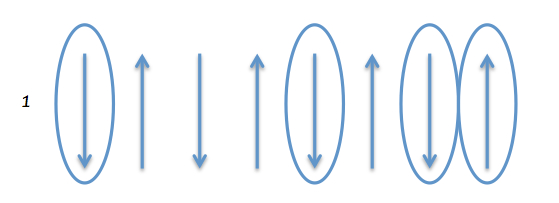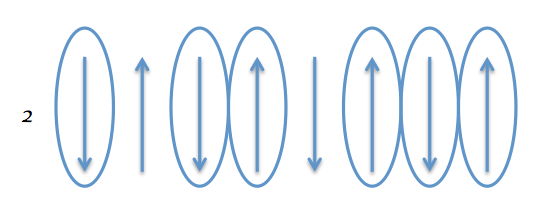In last week's blog we talked a lot about conquering the basics of rhythm with one key tool to do, which was that constant movement in the right hand.
This week we are going to focus on a few tips to take your strumming to the next level by being able to create more interest with your strumming - especially helpful for those just getting a grasp of strumming.
Using constant movement to build and strip back
Last week the focus was on having constant movement in our strumming. This week we want to use that to build up and strip back our playing.
The idea of this is simple, however executing it can be more tricky. All of the space in our "strumming pattern" when we miss the strings on an up or down stroke can be filled in, so we want to experiment building up a rhythm by adding few extra strums to your pattern.
A good way to practice is to take a simple pattern like the one underneath, and once you've played it a few times, add in some more strums to fill out the sound. Don't worry if it's not happening straight away, have a few goes at it.

Then try the opposite, where we take a busy rhythm and try to strip it back by taking out some of the strums - here is a nice busy rhythm to try with.

Arpeggiating - not playing the whole chord every time
One thing that many people do which makes their strumming sound monotonous is strum every note in every chord, every time. The easiest way to bring interest is to just focus some strums on just a few strings in the chord, maybe even just one string. This is actually surprisingly easy to do and shouldn't need much explanation, however it is one thing that many inexperienced guitarists can easily neglect or just not think to do.
By doing this we get to highlight different parts of the chord which can actually give us a lot more control over the mood.
These are not rules you need to follow but will give you an idea of how to make your strumming heavier or lighter. In general the bass notes are stronger, so putting them on the beats (or at least the down strokes) will make the strumming sound heavier. And the more you focus on those higher notes, the lighter the strumming will be.
Focusing on feel
Now this may seem a bit vague, but essentially we're wanting to be able to play a 'feel' rather than a strumming pattern. Is it up-tempo? Poppy? Laid back? Swing? Rocky? etc. etc.
The first step to this is to be able to HEAR what the rhythm you're trying to play is, then connect that to when our pick strikes the strings (remember that our hand is in constant motion).
Very rarely does a song use a "strumming pattern" the whole time, so what this comes down to is having the ability to capture a feel and be able to vary our rhythm slightly without losing the feel. A good example of this is when we build up or strip back a rhythm, however generally we don't want to lose the "feel" of the rhythm, we are just changing how busy it is.
Rhythm exercises
One of the best exercises to practice rhythm and strumming is to just set a metronome to any tempo and just strum one chord over and over, trying to change the rhythm often, bringing it up and down again, changing between making the feel heavy on the down beats, to more on the upbeats, to somewhere in between, to arpeggiating the pattern more, even changing the overall feel etc. Only playing one chord allows you to keep total focus on what your right hand is doing.
Through this you can try and change the feel completely, or even just work on building up a rhythm and stripping it back again.
Thank you very much for reading, don't forget to like comment, subscribe and contact me for any questions or enquiries
Paul
TMTG
